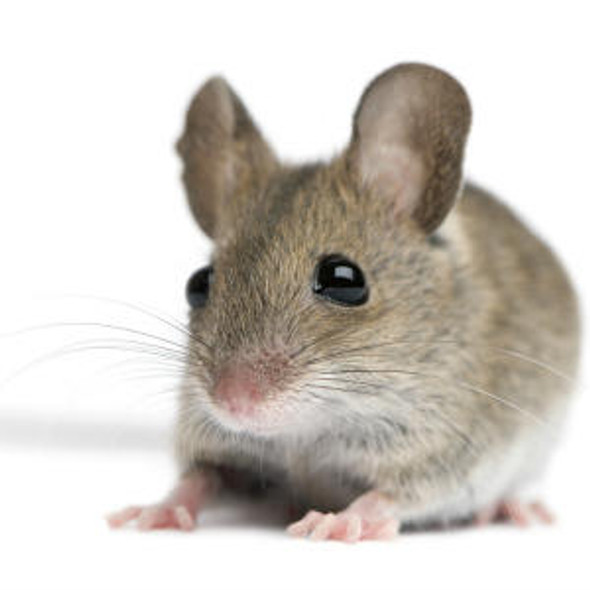Rat Mothers against decapentaplegic homolog 2 (Smad2) ELISA Kit
- SKU:
- RTEB1417
- Product Type:
- ELISA Kit
- Size:
- 96 Assays
- Uniprot:
- O70436
- Range:
- 0.625-40 ng/mL
- ELISA Type:
- Sandwich
- Synonyms:
- Smad2, JV18, MADH2, MADR2, JV18-1, hMAD-2, hSMAD2, SMAD family member 2, SMAD 2, Smad2, JV18-1, Mad-related protein 2, hMAD-2
- Reactivity:
- Rat
Description
| Product Name: | Rat Mothers against decapentaplegic homolog 2 (Smad2) ELISA Kit |
| Product Code: | RTEB1417 |
| Alias: | Mothers against decapentaplegic homolog 2, MAD homolog 2, Mothers against DPP homolog 2, Mad-related protein 2, SMAD family member 2, SMAD 2, Smad2, Smad2, Madh2 |
| Uniprot: | O70436 |
| Reactivity: | Rat |
| Range: | 0.625-40 ng/mL |
| Detection Method: | Sandwich |
| Size: | 96 Assay |
| Storage: | Please see kit components below for exact storage details |
| Note: | For research use only |
| UniProt Protein Function: | SMAD2: ubiquitously expressed transcription factor phosphorylated and activated by TGF-beta receptor-type kinases. Participates in a wide range of critical processes including morphogenesis, cell-fate determination, proliferation, differentiation and apoptosis. Phosphorylated Smads dimerize with collaborating Smad4 and are translocated into the nucleus, where the transcription of target genes is stimulated. Two alternatively spliced isoforms have been described. |
| UniProt Protein Details: | Protein type:Transcription factor; DNA-binding Chromosomal Location of Human Ortholog: 18q21.1 Cellular Component: cytoplasm; cytosol; nuclear chromatin; nucleoplasm; nucleus; transcription factor complex Molecular Function:chromatin binding; DNA binding; double-stranded DNA binding; metal ion binding; phosphatase binding; protein binding; protein heterodimerization activity; protein homodimerization activity; SMAD binding; transcription activator binding; transcription factor activity; transcription factor binding; transforming growth factor beta receptor binding; transforming growth factor beta receptor, pathway-specific cytoplasmic mediator activity; ubiquitin protein ligase binding Biological Process: activin receptor signaling pathway; anterior/posterior pattern formation; cell fate commitment; common-partner SMAD protein phosphorylation; embryonic cranial skeleton morphogenesis; embryonic foregut morphogenesis; endoderm formation; gastrulation; gene expression; in utero embryonic development; insulin secretion; lung development; mesoderm formation; negative regulation of cell proliferation; negative regulation of transcription from RNA polymerase II promoter; negative regulation of transcription, DNA-dependent; negative regulation of transforming growth factor beta receptor signaling pathway; organ growth; palate development; pancreas development; paraxial mesoderm morphogenesis; pericardium development; positive regulation of BMP signaling pathway; positive regulation of transcription from RNA polymerase II promoter; positive regulation of transcription, DNA-dependent; post-embryonic development; primary microRNA processing; regulation of binding; regulation of transforming growth factor beta receptor signaling pathway; response to glucose stimulus; SMAD protein complex assembly; somatic stem cell maintenance; transcription initiation from RNA polymerase II promoter; transcription, DNA-dependent; transforming growth factor beta receptor signaling pathway; ureteric bud development; zygotic determination of dorsal/ventral axis |
| NCBI Summary: | The protein encoded by this gene belongs to the SMAD, a family of proteins similar to the gene products of the Drosophila gene 'mothers against decapentaplegic' (Mad) and the C. elegans gene Sma. SMAD proteins are signal transducers and transcriptional modulators that mediate multiple signaling pathways. This protein mediates the signal of the transforming growth factor (TGF)-beta, and thus regulates multiple cellular processes, such as cell proliferation, apoptosis, and differentiation. This protein is recruited to the TGF-beta receptors through its interaction with the SMAD anchor for receptor activation (SARA) protein. In response to TGF-beta signal, this protein is phosphorylated by the TGF-beta receptors. The phosphorylation induces the dissociation of this protein with SARA and the association with the family member SMAD4. The association with SMAD4 is important for the translocation of this protein into the nucleus, where it binds to target promoters and forms a transcription repressor complex with other cofactors. This protein can also be phosphorylated by activin type 1 receptor kinase, and mediates the signal from the activin. Alternatively spliced transcript variants have been observed for this gene. [provided by RefSeq, May 2012] |
| UniProt Code: | O70436 |
| NCBI GenInfo Identifier: | 13633914 |
| NCBI Gene ID: | 4087 |
| NCBI Accession: | Q15796.1 |
| UniProt Secondary Accession: | O70436,Q62432, O70436, |
| UniProt Related Accession: | Q15796 |
| Molecular Weight: | 48,956 Da |
| NCBI Full Name: | Mothers against decapentaplegic homolog 2 |
| NCBI Synonym Full Names: | SMAD family member 2 |
| NCBI Official Symbol: | SMAD2 |
| NCBI Official Synonym Symbols: | JV18; MADH2; MADR2; JV18-1; hMAD-2; hSMAD2 |
| NCBI Protein Information: | mothers against decapentaplegic homolog 2 |
| UniProt Protein Name: | Mothers against decapentaplegic homolog 2 |
| UniProt Synonym Protein Names: | JV18-1; Mad-related protein 2; hMAD-2; SMAD family member 2; SMAD 2; Smad2; hSMAD2 |
| Protein Family: | Mothers against decapentaplegic |
| UniProt Gene Name: | SMAD2 |
| UniProt Entry Name: | SMAD2_HUMAN |
| Component | Quantity (96 Assays) | Storage |
| ELISA Microplate (Dismountable) | 8×12 strips | -20°C |
| Lyophilized Standard | 2 | -20°C |
| Sample Diluent | 20ml | -20°C |
| Assay Diluent A | 10mL | -20°C |
| Assay Diluent B | 10mL | -20°C |
| Detection Reagent A | 120µL | -20°C |
| Detection Reagent B | 120µL | -20°C |
| Wash Buffer | 30mL | 4°C |
| Substrate | 10mL | 4°C |
| Stop Solution | 10mL | 4°C |
| Plate Sealer | 5 | - |
Other materials and equipment required:
- Microplate reader with 450 nm wavelength filter
- Multichannel Pipette, Pipette, microcentrifuge tubes and disposable pipette tips
- Incubator
- Deionized or distilled water
- Absorbent paper
- Buffer resevoir
*Note: The below protocol is a sample protocol. Protocols are specific to each batch/lot. For the correct instructions please follow the protocol included in your kit.
Allow all reagents to reach room temperature (Please do not dissolve the reagents at 37°C directly). All the reagents should be mixed thoroughly by gently swirling before pipetting. Avoid foaming. Keep appropriate numbers of strips for 1 experiment and remove extra strips from microtiter plate. Removed strips should be resealed and stored at -20°C until the kits expiry date. Prepare all reagents, working standards and samples as directed in the previous sections. Please predict the concentration before assaying. If values for these are not within the range of the standard curve, users must determine the optimal sample dilutions for their experiments. We recommend running all samples in duplicate.
| Step | |
| 1. | Add Sample: Add 100µL of Standard, Blank, or Sample per well. The blank well is added with Sample diluent. Solutions are added to the bottom of micro ELISA plate well, avoid inside wall touching and foaming as possible. Mix it gently. Cover the plate with sealer we provided. Incubate for 120 minutes at 37°C. |
| 2. | Remove the liquid from each well, don't wash. Add 100µL of Detection Reagent A working solution to each well. Cover with the Plate sealer. Gently tap the plate to ensure thorough mixing. Incubate for 1 hour at 37°C. Note: if Detection Reagent A appears cloudy warm to room temperature until solution is uniform. |
| 3. | Aspirate each well and wash, repeating the process three times. Wash by filling each well with Wash Buffer (approximately 400µL) (a squirt bottle, multi-channel pipette,manifold dispenser or automated washer are needed). Complete removal of liquid at each step is essential. After the last wash, completely remove remaining Wash Buffer by aspirating or decanting. Invert the plate and pat it against thick clean absorbent paper. |
| 4. | Add 100µL of Detection Reagent B working solution to each well. Cover with the Plate sealer. Incubate for 60 minutes at 37°C. |
| 5. | Repeat the wash process for five times as conducted in step 3. |
| 6. | Add 90µL of Substrate Solution to each well. Cover with a new Plate sealer and incubate for 10-20 minutes at 37°C. Protect the plate from light. The reaction time can be shortened or extended according to the actual color change, but this should not exceed more than 30 minutes. When apparent gradient appears in standard wells, user should terminatethe reaction. |
| 7. | Add 50µL of Stop Solution to each well. If color change does not appear uniform, gently tap the plate to ensure thorough mixing. |
| 8. | Determine the optical density (OD value) of each well at once, using a micro-plate reader set to 450 nm. User should open the micro-plate reader in advance, preheat the instrument, and set the testing parameters. |
| 9. | After experiment, store all reagents according to the specified storage temperature respectively until their expiry. |
When carrying out an ELISA assay it is important to prepare your samples in order to achieve the best possible results. Below we have a list of procedures for the preparation of samples for different sample types.
| Sample Type | Protocol |
| Serum | If using serum separator tubes, allow samples to clot for 30 minutes at room temperature. Centrifuge for 10 minutes at 1,000x g. Collect the serum fraction and assay promptly or aliquot and store the samples at -80°C. Avoid multiple freeze-thaw cycles. If serum separator tubes are not being used, allow samples to clot overnight at 2-8°C. Centrifuge for 10 minutes at 1,000x g. Remove serum and assay promptly or aliquot and store the samples at -80°C. Avoid multiple freeze-thaw cycles. |
| Plasma | Collect plasma using EDTA or heparin as an anticoagulant. Centrifuge samples at 4°C for 15 mins at 1000 × g within 30 mins of collection. Collect the plasma fraction and assay promptly or aliquot and store the samples at -80°C. Avoid multiple freeze-thaw cycles. Note: Over haemolysed samples are not suitable for use with this kit. |
| Urine & Cerebrospinal Fluid | Collect the urine (mid-stream) in a sterile container, centrifuge for 20 mins at 2000-3000 rpm. Remove supernatant and assay immediately. If any precipitation is detected, repeat the centrifugation step. A similar protocol can be used for cerebrospinal fluid. |
| Cell culture supernatant | Collect the cell culture media by pipette, followed by centrifugation at 4°C for 20 mins at 1500 rpm. Collect the clear supernatant and assay immediately. |
| Cell lysates | Solubilize cells in lysis buffer and allow to sit on ice for 30 minutes. Centrifuge tubes at 14,000 x g for 5 minutes to remove insoluble material. Aliquot the supernatant into a new tube and discard the remaining whole cell extract. Quantify total protein concentration using a total protein assay. Assay immediately or aliquot and store at ≤ -20 °C. |
| Tissue homogenates | The preparation of tissue homogenates will vary depending upon tissue type. Rinse tissue with 1X PBS to remove excess blood & homogenize in 20ml of 1X PBS (including protease inhibitors) and store overnight at ≤ -20°C. Two freeze-thaw cycles are required to break the cell membranes. To further disrupt the cell membranes you can sonicate the samples. Centrifuge homogenates for 5 mins at 5000xg. Remove the supernatant and assay immediately or aliquot and store at -20°C or -80°C. |
| Tissue lysates | Rinse tissue with PBS, cut into 1-2 mm pieces, and homogenize with a tissue homogenizer in PBS. Add an equal volume of RIPA buffer containing protease inhibitors and lyse tissues at room temperature for 30 minutes with gentle agitation. Centrifuge to remove debris. Quantify total protein concentration using a total protein assay. Assay immediately or aliquot and store at ≤ -20 °C. |
| Breast Milk | Collect milk samples and centrifuge at 10,000 x g for 60 min at 4°C. Aliquot the supernatant and assay. For long term use, store samples at -80°C. Minimize freeze/thaw cycles. |










